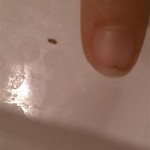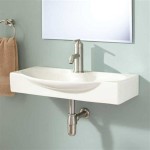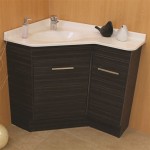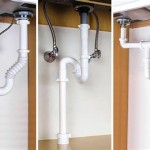How to Ventilate a Bathroom Without Windows
Bathrooms, by their very nature, are prone to moisture buildup. This can lead to a variety of problems, including mold growth, unpleasant odors, and even health issues. While windows provide a natural ventilation solution, many bathrooms lack this feature. Fortunately, effective ventilation is still achievable even in windowless bathrooms. This article will explore several proven methods for achieving proper ventilation in your bathroom, ensuring a healthy and comfortable environment.
1. Exhaust Fans: The Foundation of Bathroom Ventilation
An exhaust fan is the most crucial component of a proper ventilation system in any bathroom. These fans are specifically designed to draw out moisture-laden air from the room, preventing it from accumulating and causing problems. When selecting an exhaust fan, consider the following factors:
- Size: The fan's size and airflow capacity should be adequate for your bathroom's volume. A larger bathroom will require a more powerful fan.
- CFM (Cubic Feet per Minute): This rating indicates the volume of air the fan can move per minute. Aim for at least 50 CFM for a small bathroom and up to 100 CFM for larger spaces.
- Noise Level: Exhaust fans can be noisy, so opt for a model with a quiet operation.
- Installation: Ensure you choose a fan that is compatible with your ceiling or wall construction.
Proper installation is crucial for an exhaust fan's effectiveness. Position the fan close to the shower or bathtub to efficiently remove steam and moisture. Ensure the fan's vent pipe extends directly to the exterior of the house, with no bends or obstructions that hinder airflow. It's also essential to regularly clean the fan's exhaust vent to prevent clogging and ensure optimal performance.
2. Utilizing a Continuous Ventilation System
Traditional exhaust fans operate only when manually turned on. While effective, this approach may not provide continuous ventilation, leaving the bathroom susceptible to moisture buildup, especially during extended use. A continuous ventilation system offers a solution to this problem by providing constant airflow, even when the bathroom isn't in use.
One option is a
humidity-sensing exhaust fan
. These fans automatically activate when humidity levels in the bathroom exceed a predetermined threshold, ensuring continuous ventilation whenever necessary. Alternatively, atimer-based exhaust fan
can be set to run for a specific duration after the bathroom is used, ensuring lingering moisture is effectively removed.3. Employing Natural Ventilation Techniques
While a windowless bathroom doesn't allow for direct natural ventilation, there are still ways to incorporate natural airflow into the ventilation strategy. Consider the following:
- Door Placement: Ensure the bathroom door is placed in a location that allows for good airflow from other areas of the house. This can help draw out moisture from the bathroom, particularly when the exhaust fan is not in use.
- Door Placement: Ensure the bathroom door is placed in a location that allows for good airflow from other areas of the house. This can help draw out moisture from the bathroom, particularly when the exhaust fan is not in use.
- Under-Door Vents: Installing a vent under the bathroom door can allow fresh air to circulate in from other rooms, promoting a drier environment.
- Opening Windows in Adjacent Rooms: If there are windows in nearby rooms, open them to allow fresh air to circulate through the house. This can help draw moisture out of the bathroom, even without direct ventilation.
By combining these natural ventilation strategies with a robust exhaust fan system, you can create a healthier and more comfortable environment in your windowless bathroom.
4. Minimizing Moisture Production
Ventilation plays a crucial role in controlling bathroom moisture, but minimizing moisture production in the first place is also important. Consider the following practices:
- Short Showers: Limit the duration of showers and baths to reduce steam and moisture generation.
- Lower Water Temperatures: Hot water produces more steam than cold water. Consider using lukewarm temperatures for showering and bathing.
- Utilize Shower Curtains: Ensure the shower curtain or door creates a tight seal to prevent steam from escaping into the rest of the bathroom.
- Wipe Down Surfaces: After bathing or showering, wipe down wet surfaces, including the walls, floor, and fixtures, to prevent moisture from lingering.
- Proper Air Drying: Allow wet towels and washcloths to dry completely before putting them away, preventing mold growth and unpleasant odors.
These simple measures can significantly reduce moisture buildup in your bathroom, making ventilation even more effective.

No Bathroom Window Problem 6 Tricks To Keep Your Room Fresh Homify

How To Brighten Up A Bathroom Without Windows By Mira Showers

How To Vent A Bathroom Without Window Tips Tricks Home For Relax

How To Vent A Bathroom With No Outside Access

How To Ventilate A Bathroom Without Windows

Ventilation For Bathrooms Without Windows घर क अ दर ब च व ल थर म स द

How To Ventilate A Bathroom With No Windows

How Do You Air Out A Bathroom Without Window Victoriaplum Com

How To Properly Ventilate A Bathroom Without Window

Effective Ventilation
Related Posts







